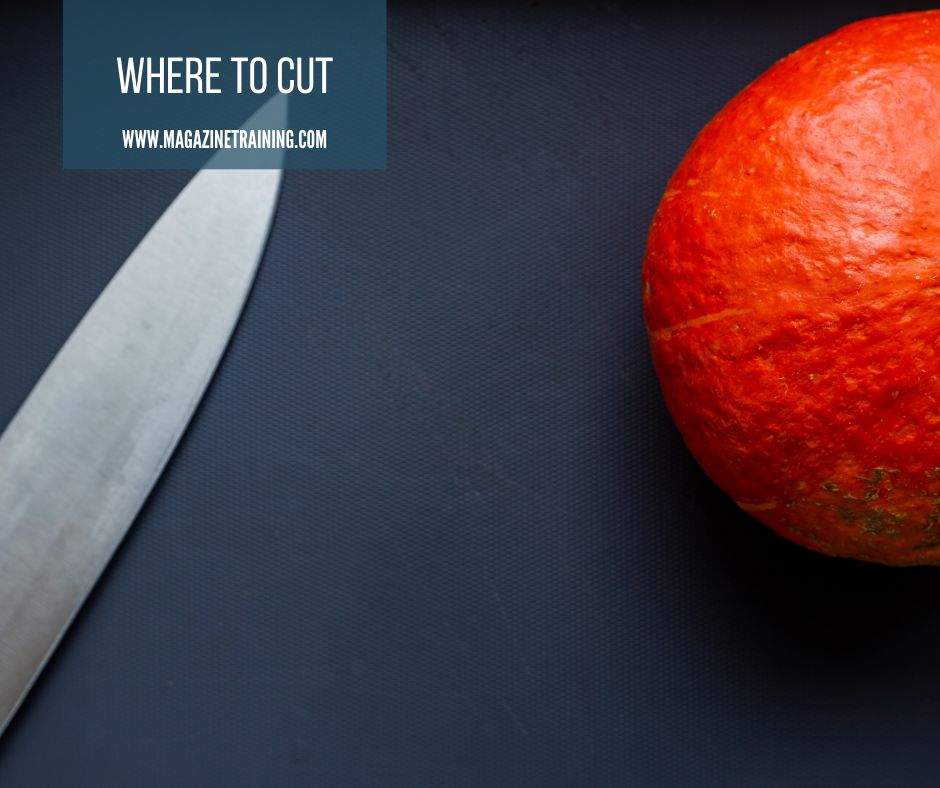
I relish the challenge of cutting an article down to size. Not that there is anything wrong with 1,000 words, but usually I need to fit an article into a particular spot in a magazine. While writers have a word count with their assignment, they often go over their allotment. Even for online content, where space is theoretically unlimited, judicious trimming results in a tighter, more compelling piece. Good writers will make their own cuts before submitting articles, but it is easier for editors to cut because they are not wed to each word.
Before Cutting
Before I start cutting, I try to understand the big idea of the article. This will help me in the cutting process, as I identify extraneous ideas. If the big idea isn’t clear, then it is hard to determine what to cut, and the article might need a complete re-write to hone the main message prior to cutting.
Next I read through and make edits that add clarity and correct errors. This process might actually make an article longer, but is an important step. For example, if there is an abrupt transition that leaves the reader wondering, adding a few words or sentences can smooth the bump and help the reader follow along.
The Hatchet
If an article is significantly longer than the target, the first cut is with a “hatchet” to chop out entire sections. Perhaps the author gives five supporting examples for the big idea. Each example might be interesting, but the hatchet edit chops the article down to the two or three most important examples. The guiding question for this chop is to consider the reader and whether or not each example illuminates the main point for the reader.
Another area to chop is predictable prose. A great editor keeps the content that is original, but cuts out areas that have been overdone in other platforms. Content should add to the conversation, not just rehash tired thoughts.
In addition, as the editor, I may chop a section that covers content which is present in another article in the magazine. This is an edit that writers cannot make, since they are only aware of their article, not how the whole magazine fits together.
The Knife
I use the knife to cut away unnecessary words that don’t add meaning; words such as really, actually and basically are throwaways.
Watch out for lists that go on and on. While a bulleted list can add clarity for the reader, no one is going to read a list of 15 items. I will focus a list on four or five essentials and trim the rest.
Often I straighten out meandering sentences with multiple clauses. I rewrite such sentences into clear, emphatic prose. Not only will content be shorter, but it will be more compelling.
After the Cut
After chopping and trimming, I set the content aside and come back later with fresh eyes to consider whether any of the edits introduced errors or dead ends. Then I enjoy the satisfaction of clear writing that hits the target.
Note: This article started at 555 words and I cut it down to 511 words.
Published with permission. Written by Carla Foote of Fine Print Editorial.
Related posts
Magazine Training International’s mission is to encourage, strengthen, and provide training and resources to Christian magazine publishers as they seek to build the church and reach their societies for Christ.

